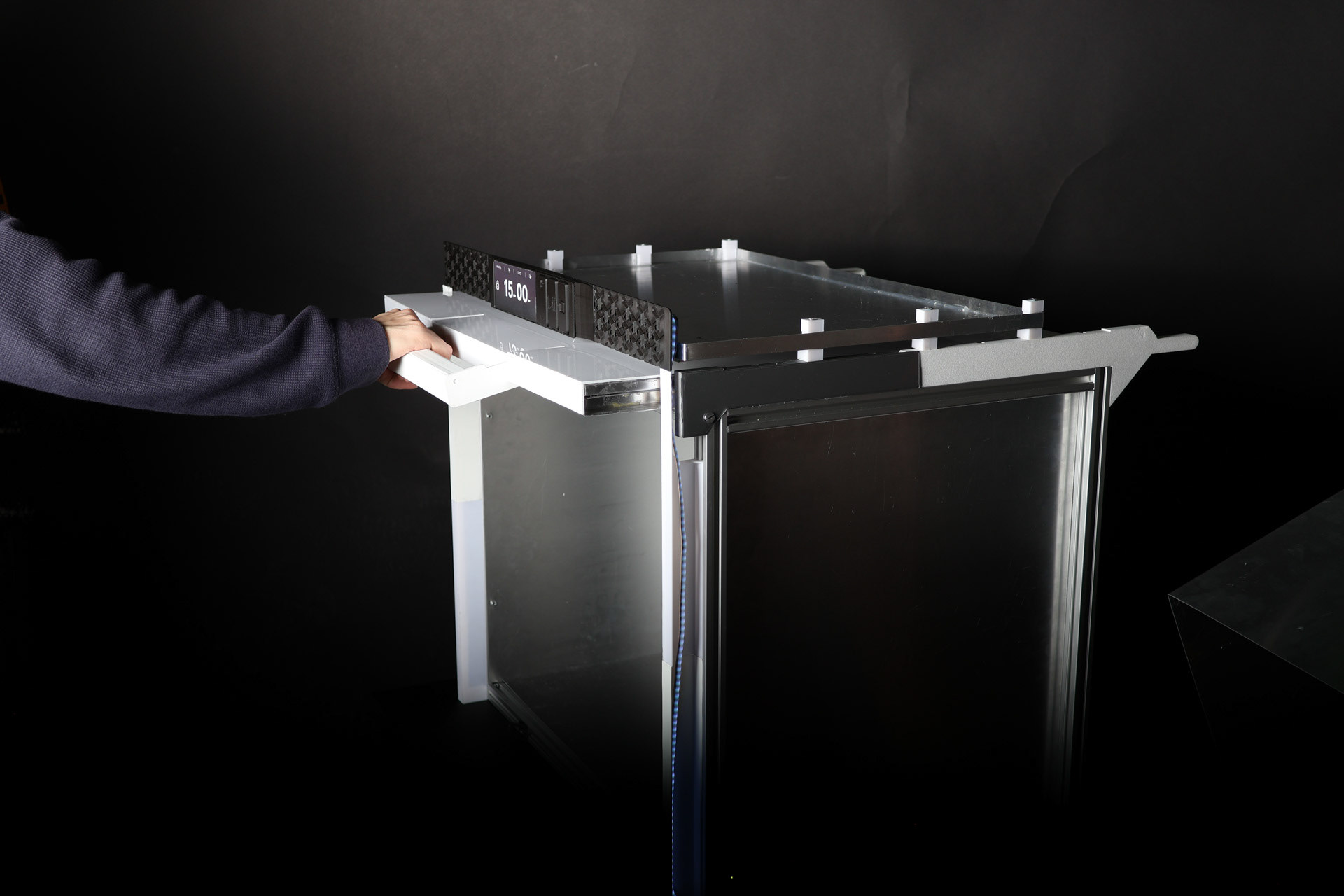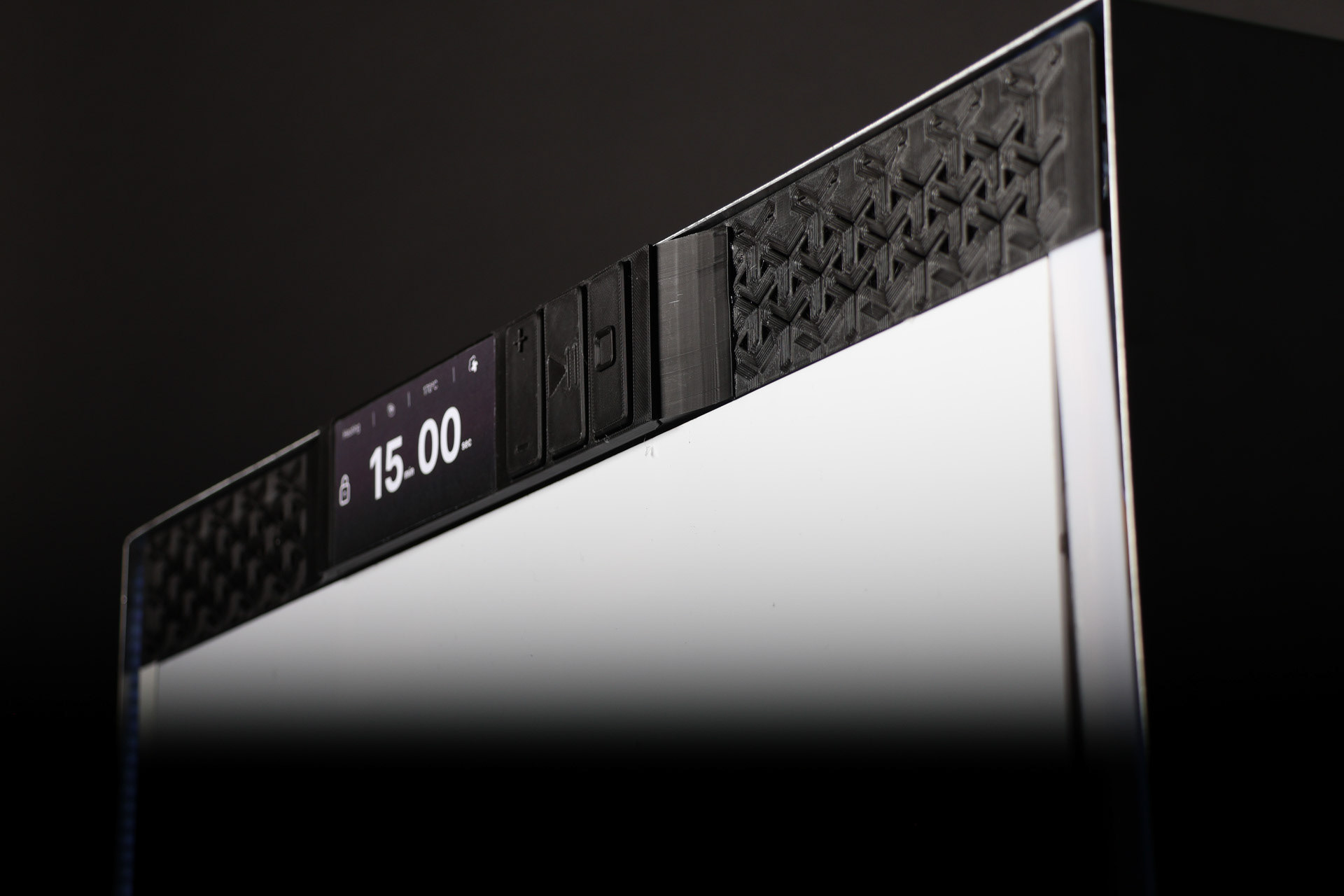Future Aerospace Oven


Focusing on flight attendants and airplane efficiency
Group members: N.Rinkes, R.Hoek, X.Zhang, Q.Wang
2024/25 - 20 Weeks
The Problem
Plane guests love warm meals and airlines have to provide them. Currently large aircrafts are equipped with up to 36 identical ovens. When airborne and activated, these ovens are the main power consumer on board. Flight attendants are stressed to prepare warm meals quickly after take off and are frequently exposed to hot steam exploding in their face or their arms burning on the side of the door. These ovens are part of an throughly engineered ecosystem which is required to withstand great forces and meet aerospace regulations.
The Objective
To address the future of an aerospace oven we wanted to improve the usability of the ovens and also the energy and weight efficiency. This concept should be plausible to be launched with the next generation aircraft in five years.
The Vision
The future galley in aircrafts
When flying becomes increasingly comfortable and tailored towards customers the centre of it will be an array of ovens providing freshly heated meals. These ovens will be designed to assist flight attendants being safe, efficient and easy to use.
The Process
Through interviews with over 20 international flight attendants (Dutch, German and Chinese). Qualitative and Quantitative findings were statistically documented and lead to meaningful design decisions.
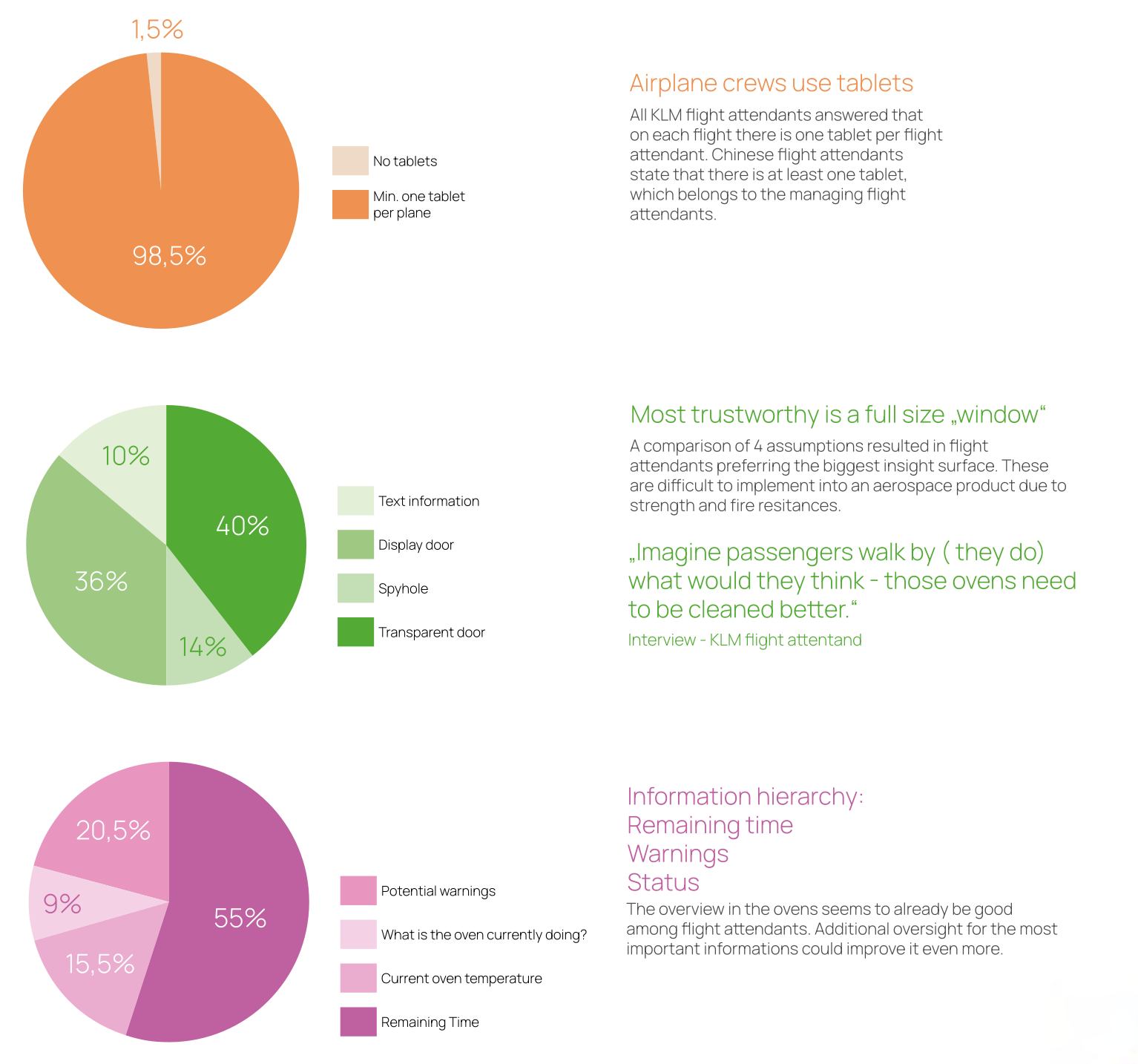
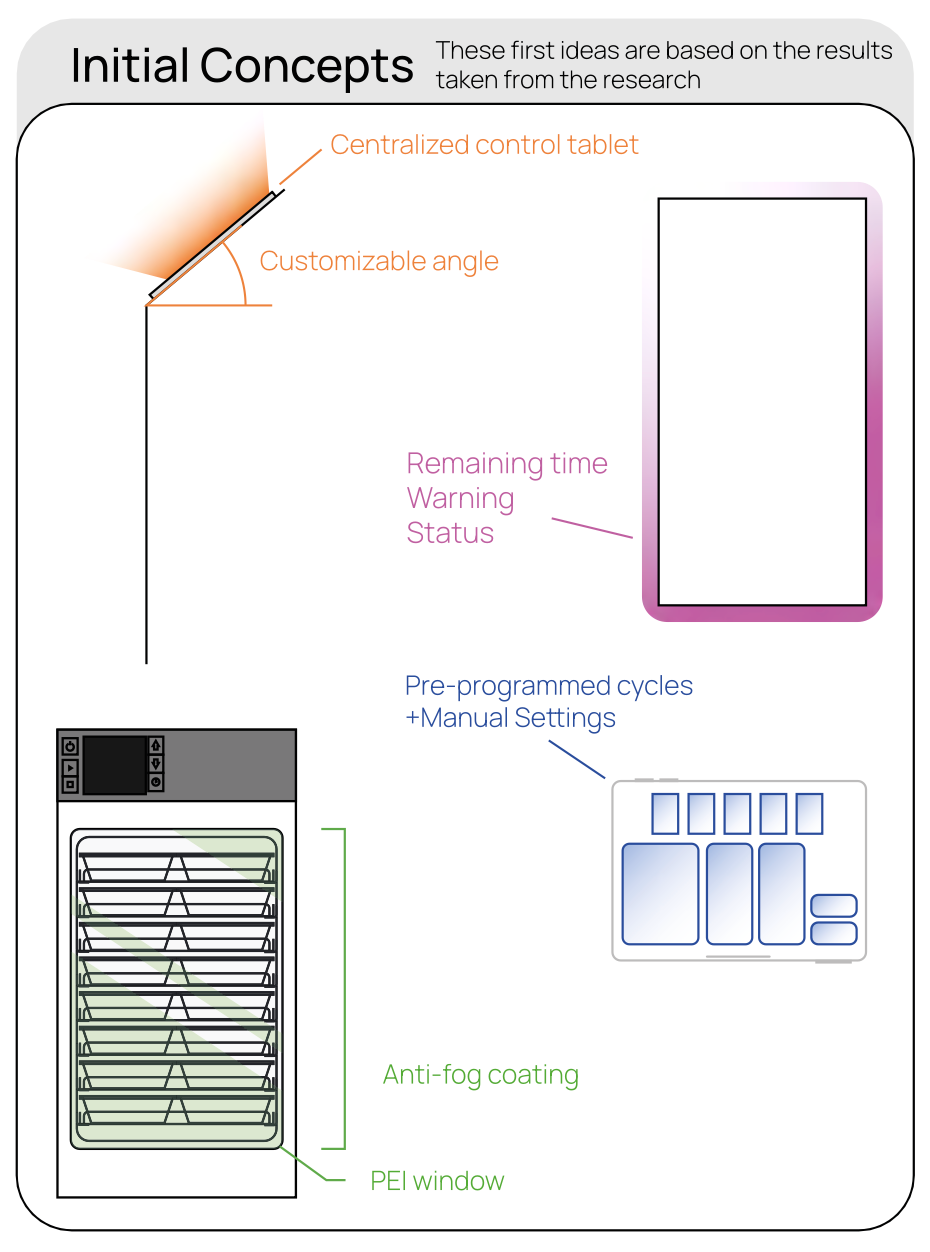

Current oven

Current Interface
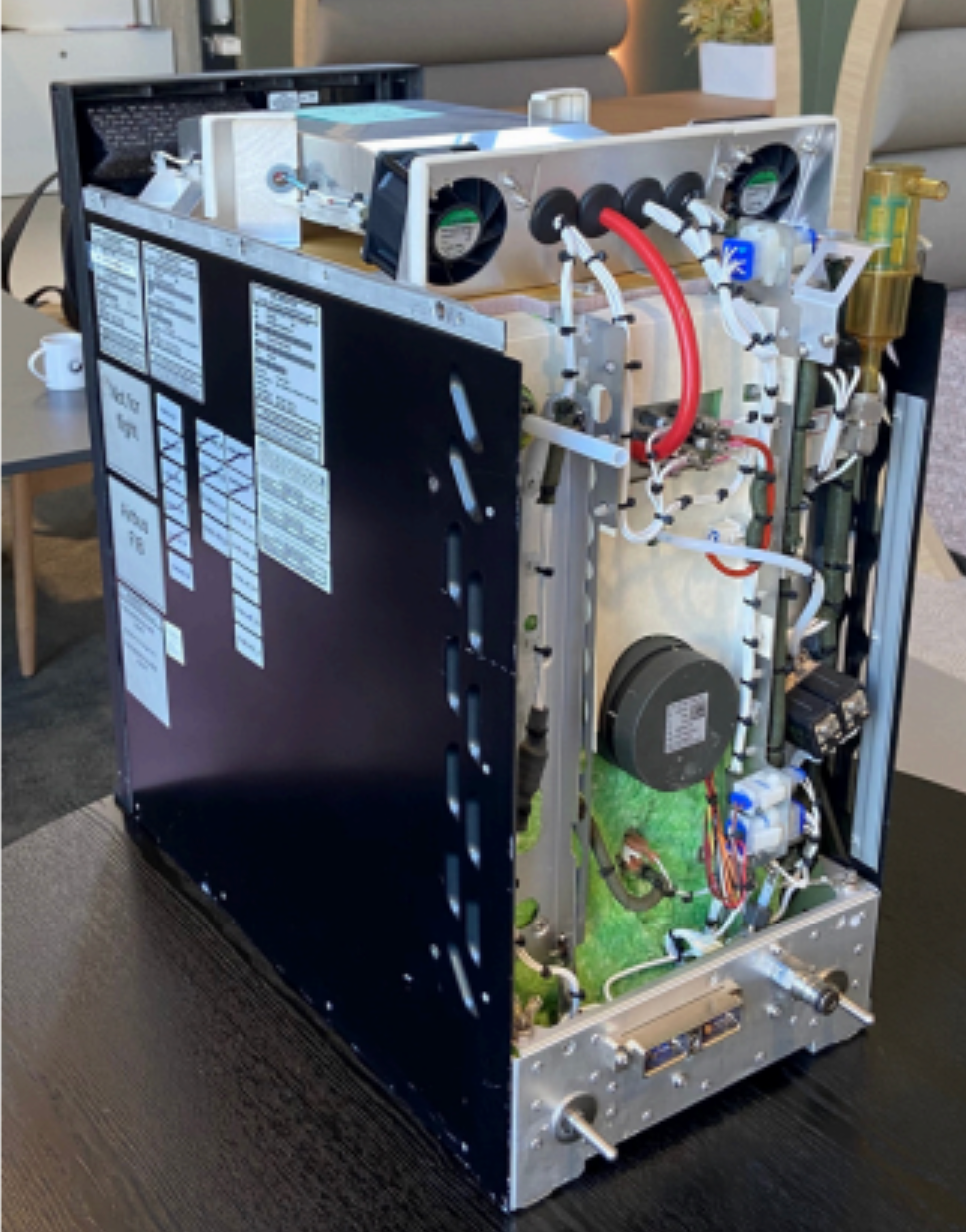
Disassembly
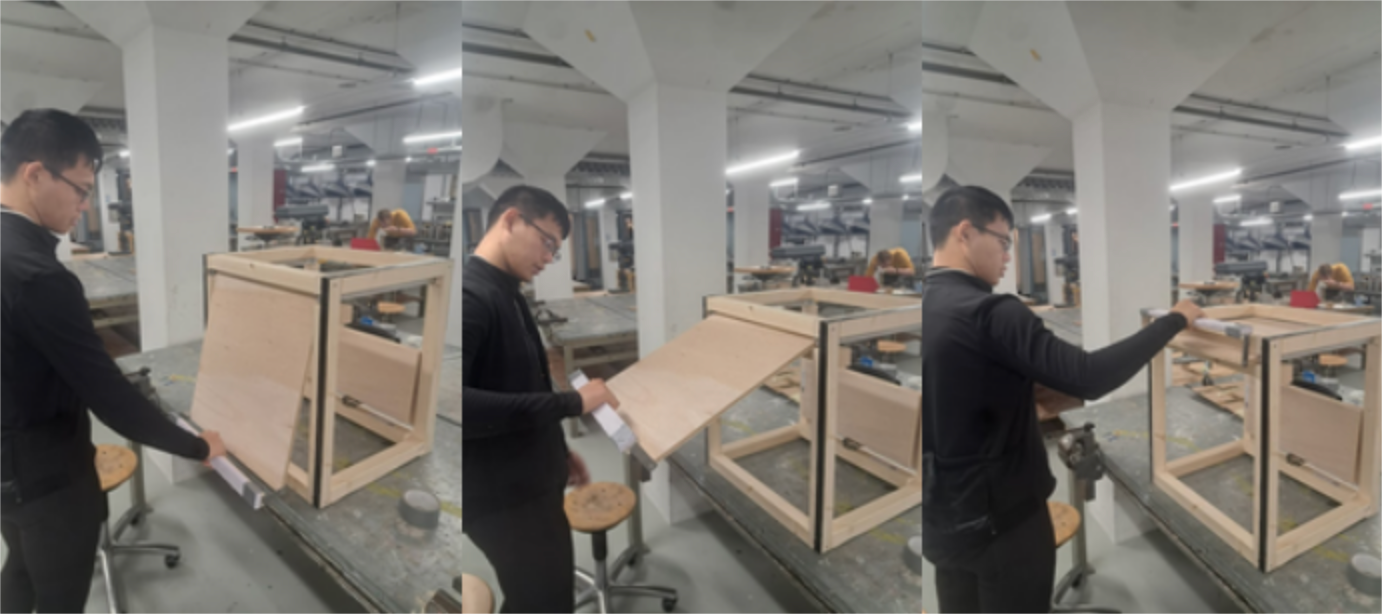
Sliding up and away door
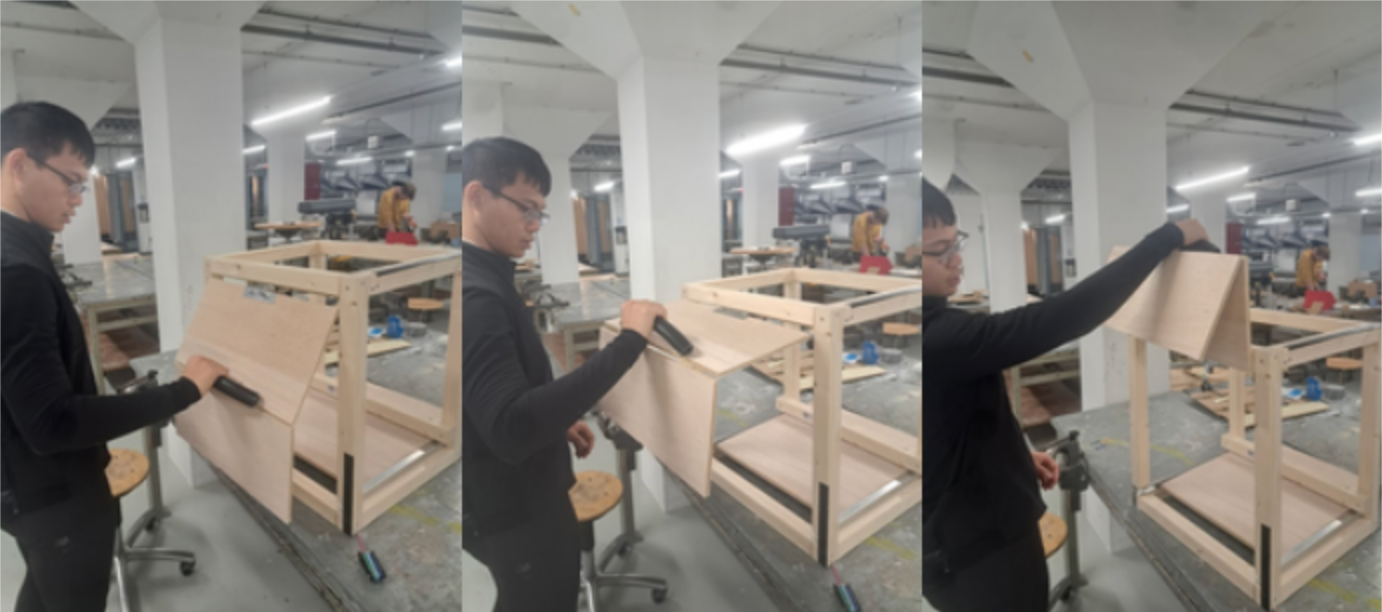
Folding up door
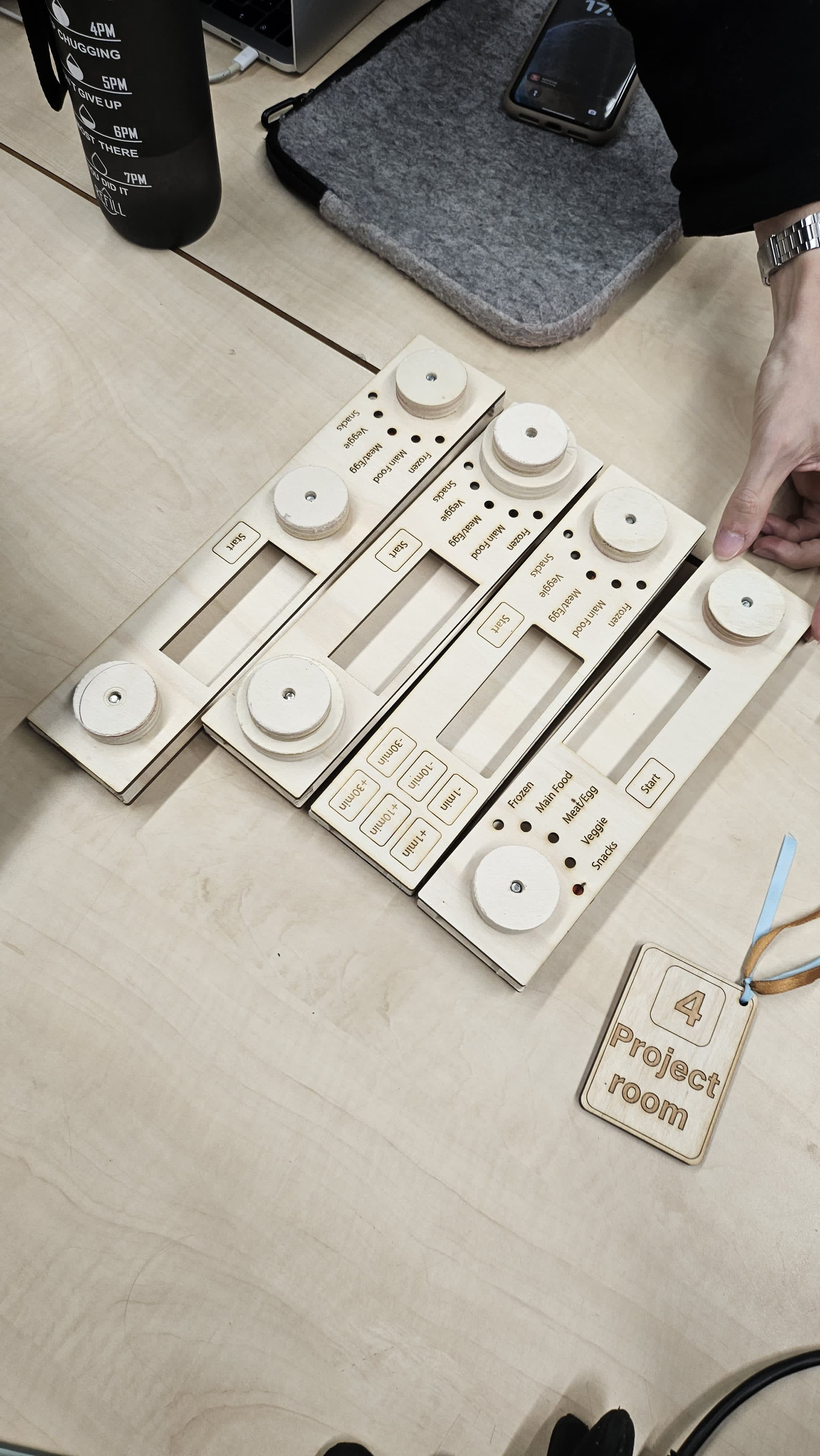
Interface controls
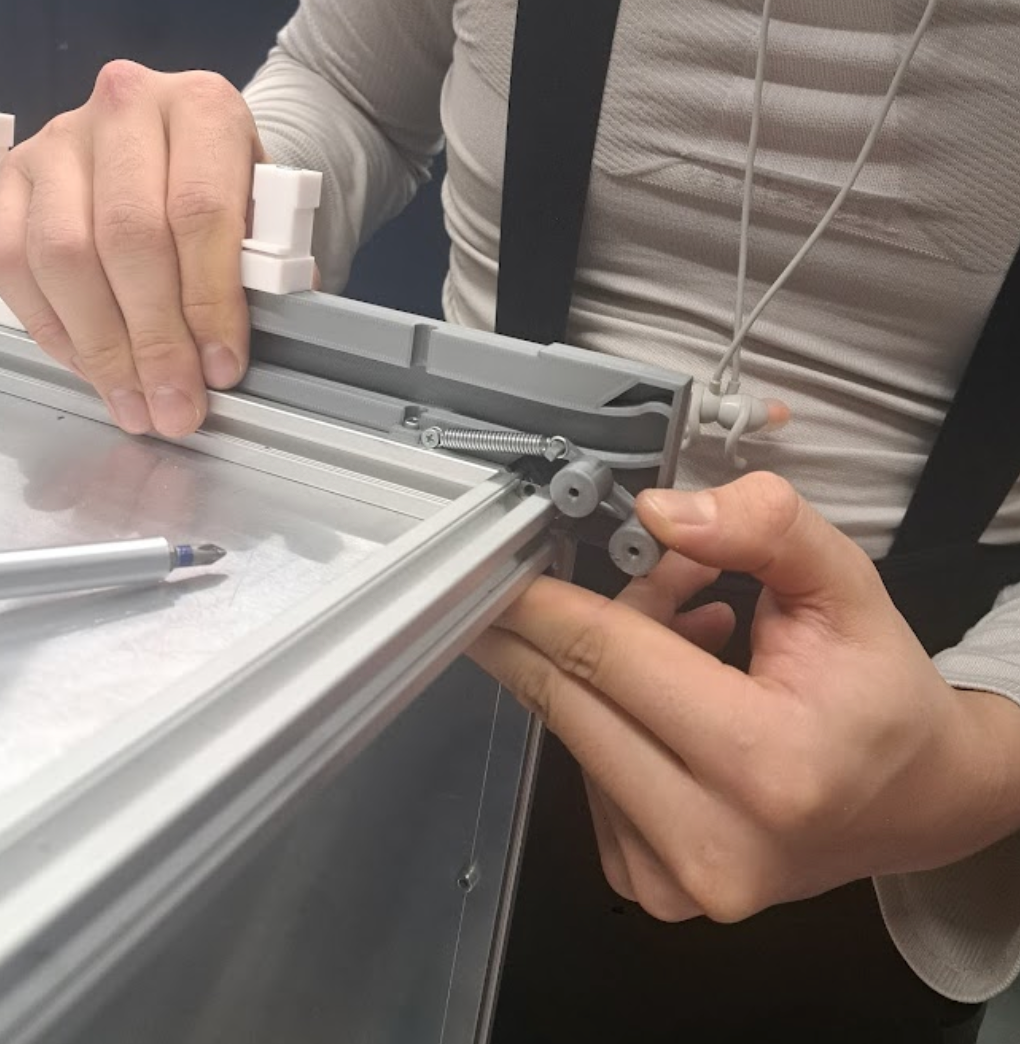
Spring loaded hinge
The Final Design
More sustainable, safer, faster and efficient
Double width
By changing the ovens outer dimensions to exactly double this results in minimal galley changes and weight savings. Each double sized oven saves around 4.8kg compared to two small ovens.
Slide away door
An innovative door opening mechanism allows the most natural door opening feeling, protects flight attendants and maximizes space within the galley. Opening upwards prevents the hot surface to be exposed or the door from being mis used as a tray. Fully stowed the handle stays exposed allowing fast closing. When opening the door fully retracts in one motion and requires little effort due to springs.
Always front facing handle
Sliding up and away door
Safety
We found out, that flight attendants struggle with hot steam and water droplets rapidly ejecting the ovens when opened quickly. For this a mandatory 5 second de-steaming sequence was implanted to guarantee safe opening of the ovens. This de-steaming automatically activates after the heating cycle has safely completed or the handle was manually squeezed, indicating the oven to open.
Assisted by a blinking orange light, the oven indicates the short de-steaming process to bystanders, preventing them from holding the handle or reaching the bottom of the oven. Once it switches to green, the cycle has completed and the oven can be safely opened.

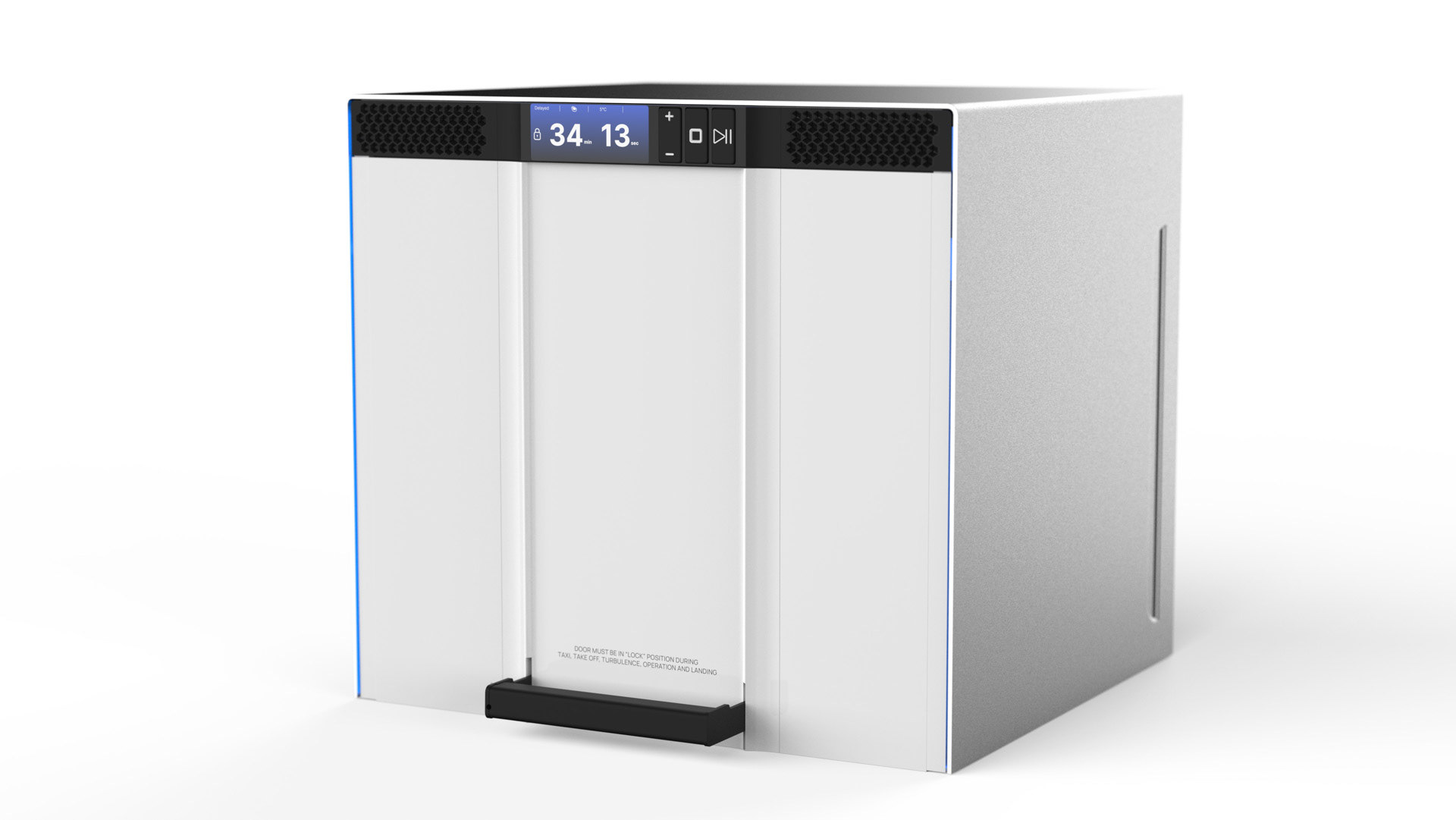
Slight door movement for the 5 seconds de-steaming process.
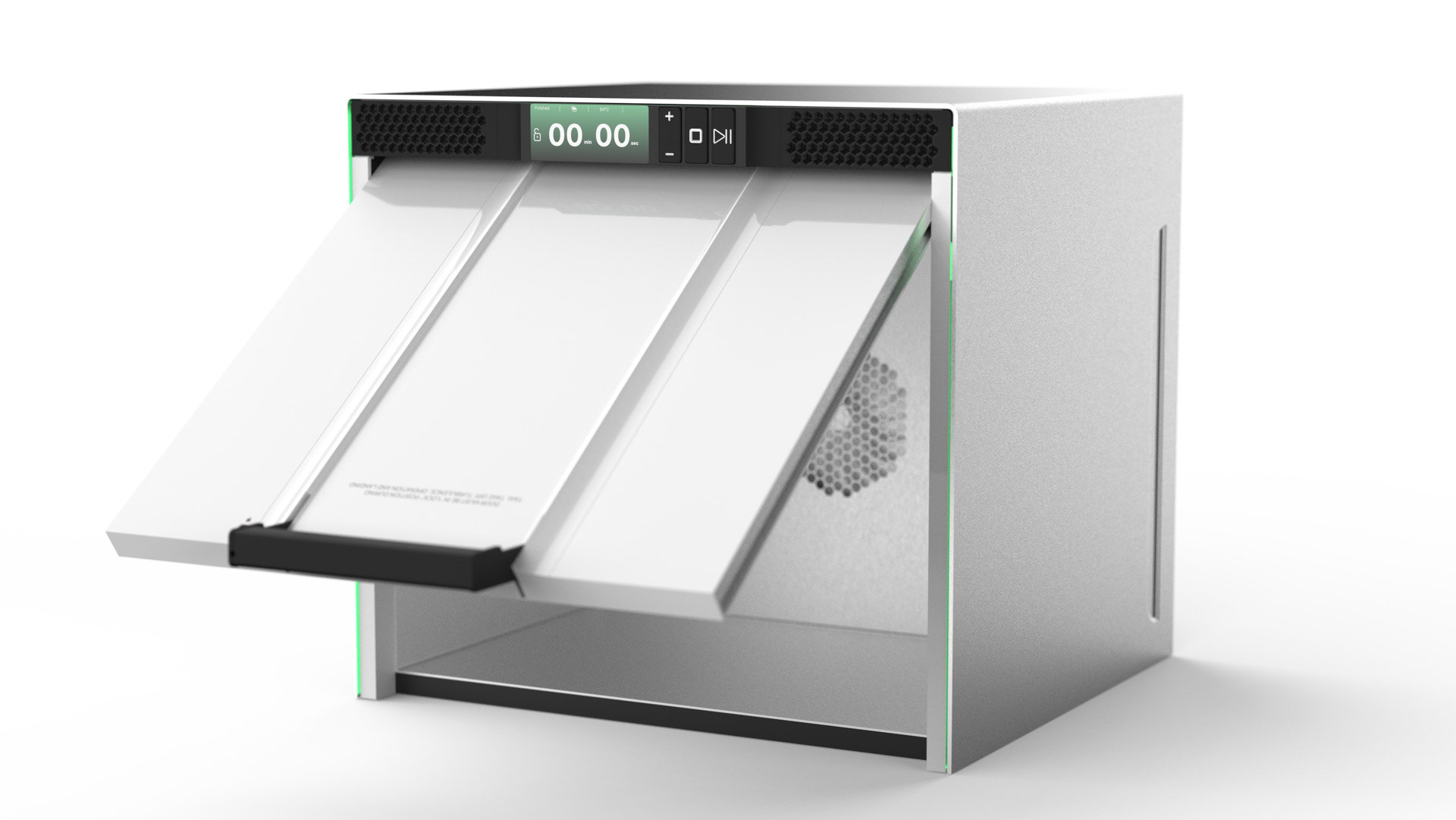
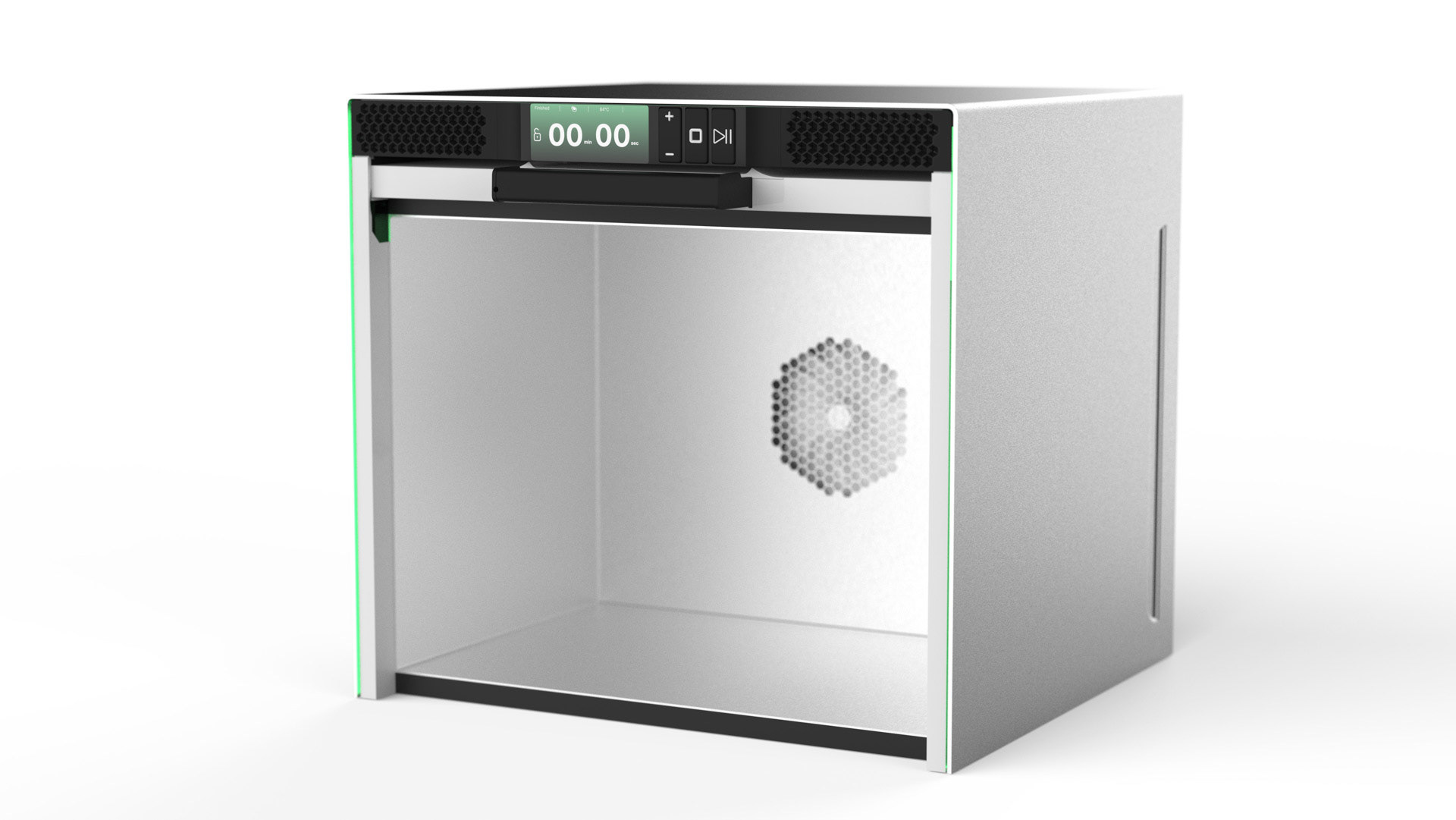
Locking Mechanism
The locking is robust, allows motorised opening (desteaming) and being slammed shut.
Centralized Control
To capitalise on existing tablets aboard each aircraft we've developed an interface which allows controlling individual, grouped or all ovens at once. Reducing stress and increasing speed, oversight and efficiency for flight attendants. Local controls on the ovens allow spontaneous changes and functional security.

Aircraft overview
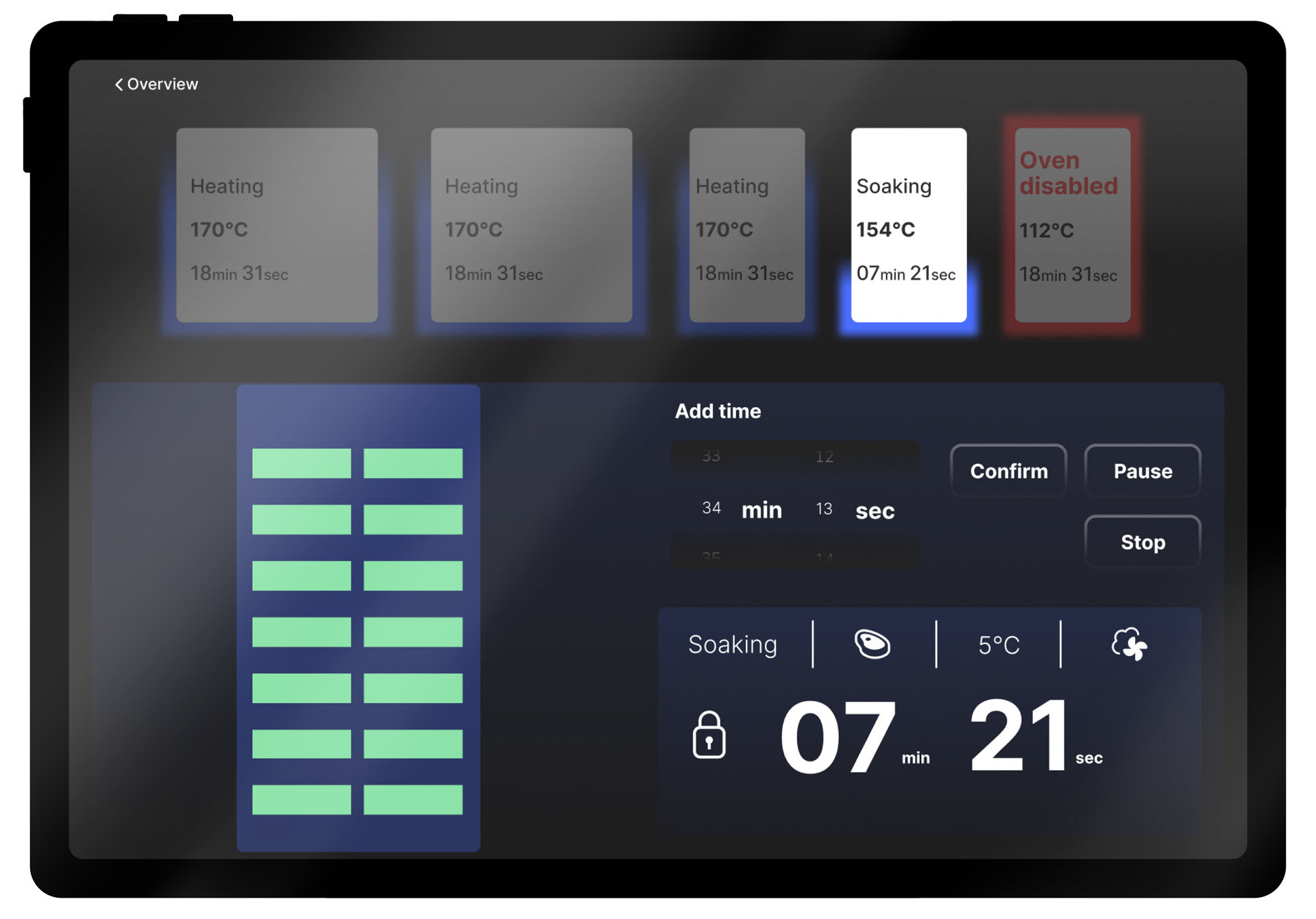
Oven information
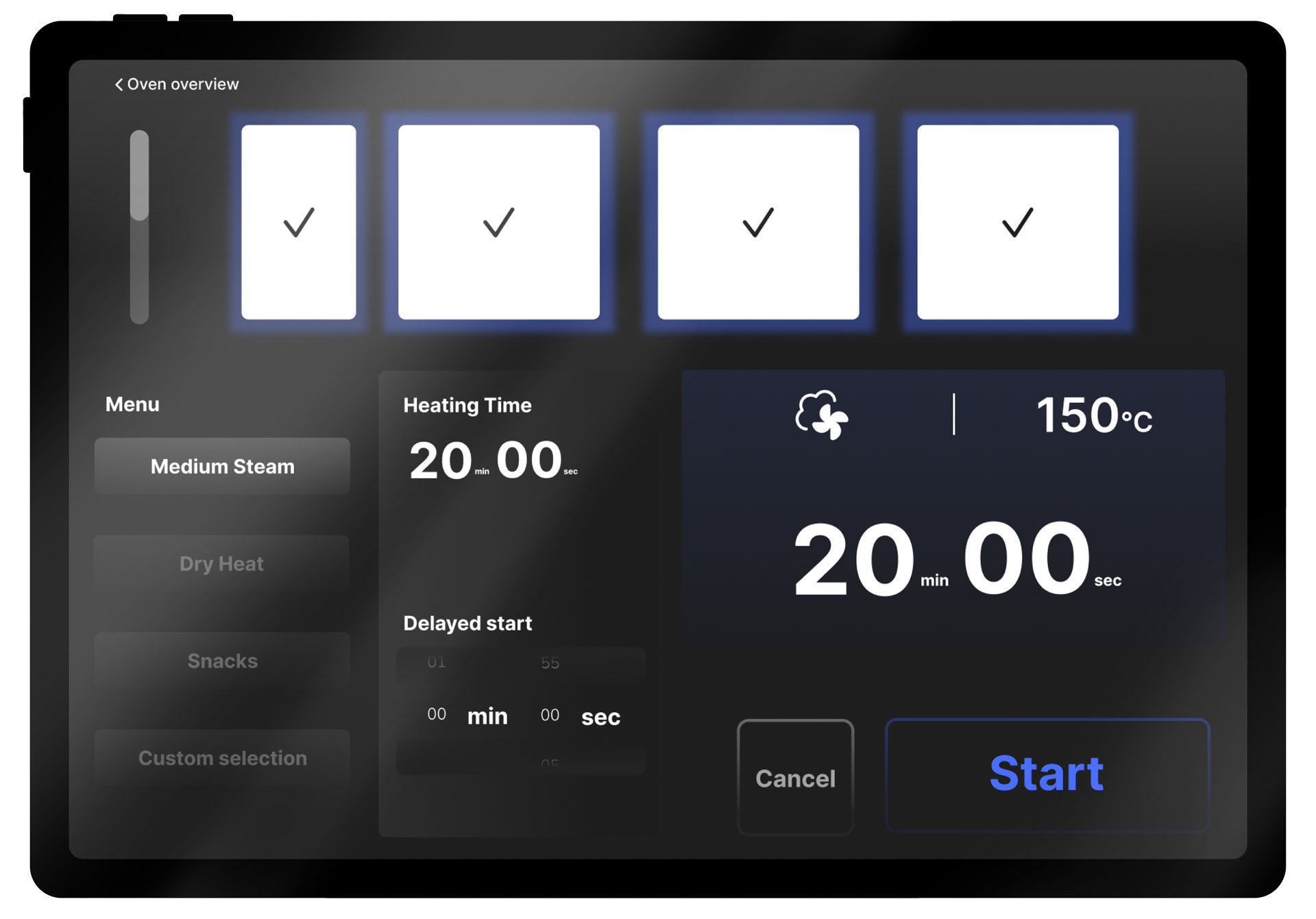
Grouped oven setup

Cycle status
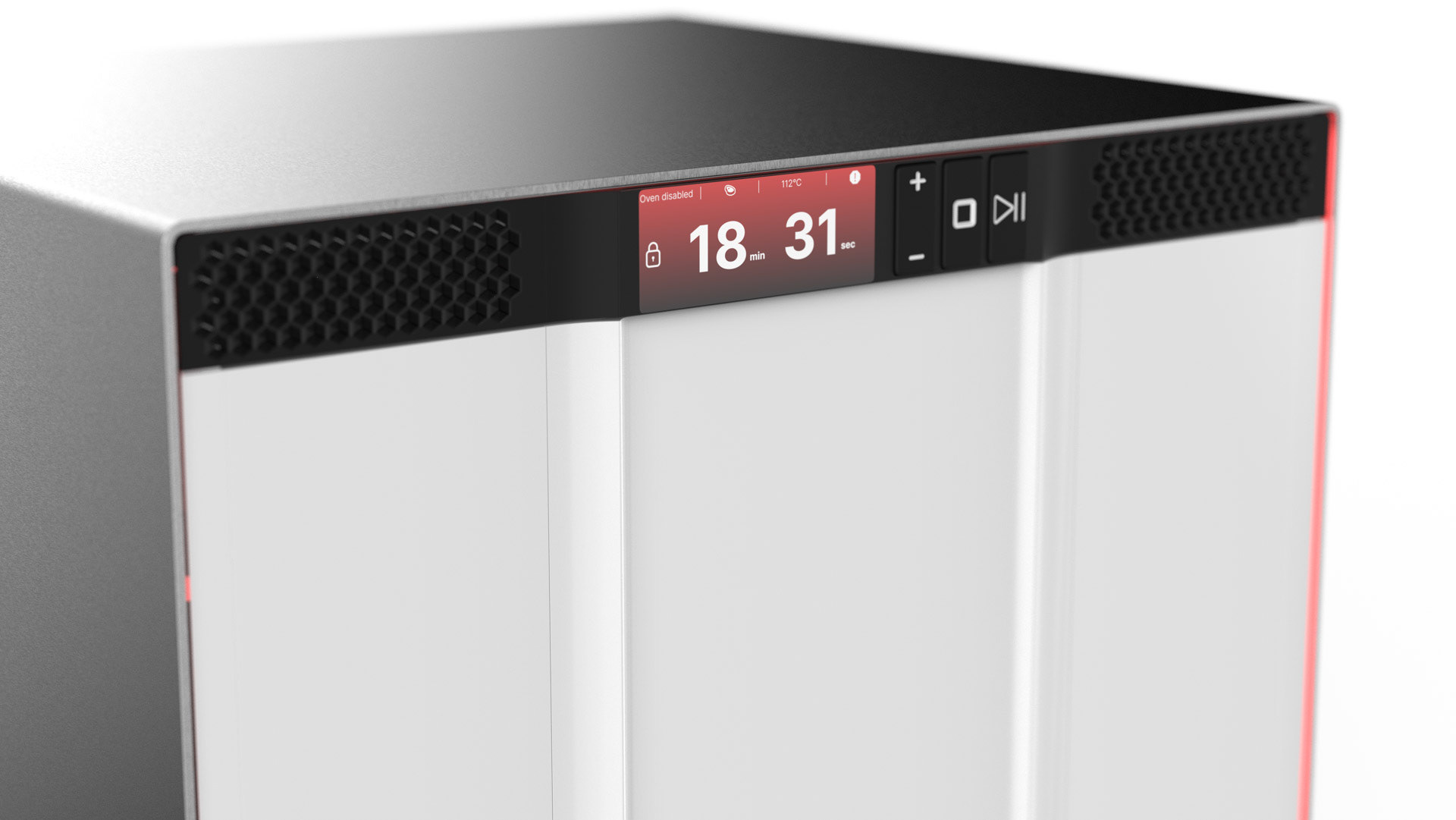
Oven disabled

Warning
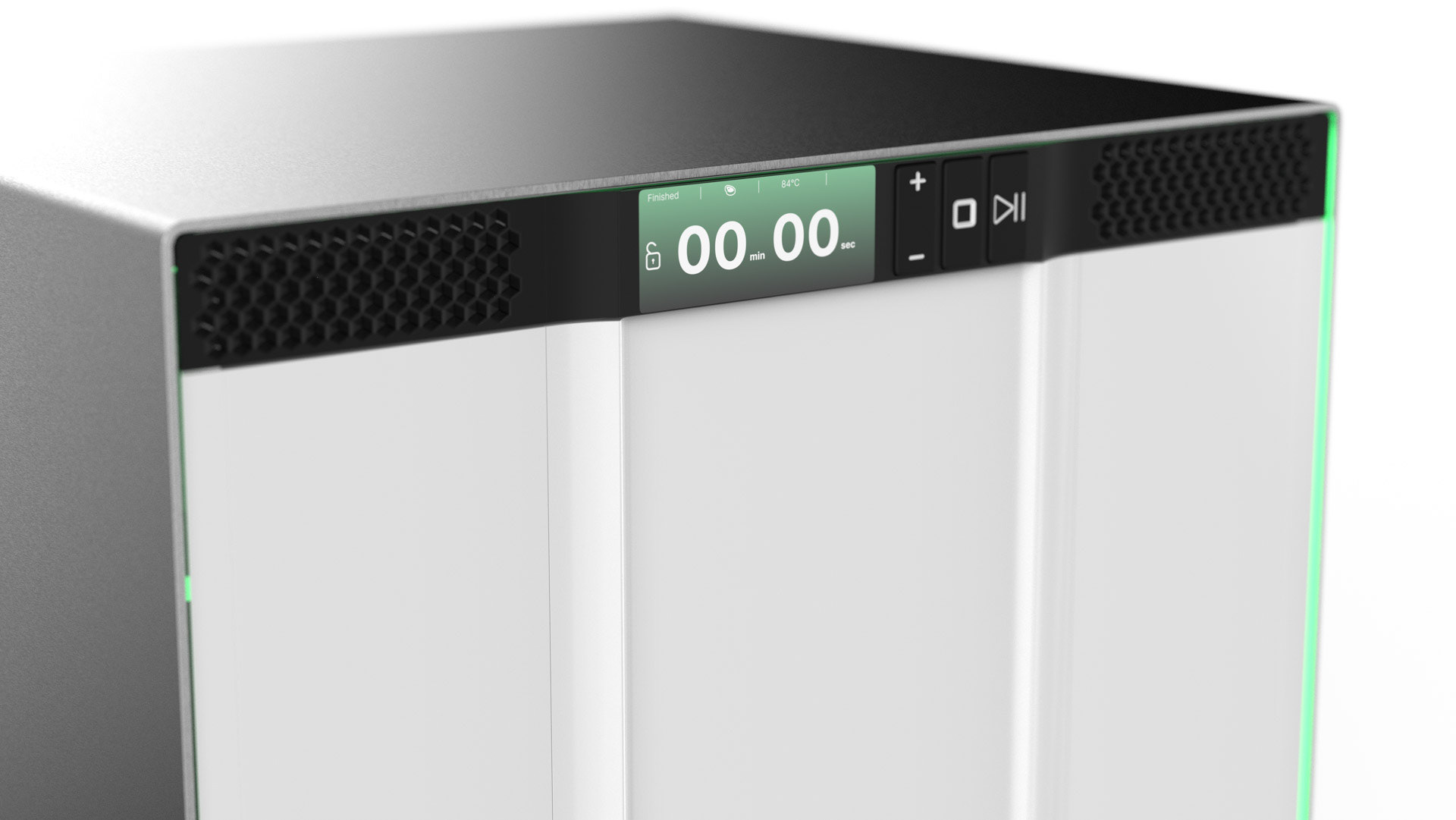
Cycle completed
Prototype
We built a 1:1 final prototype which showcased the LED strip functionalities, double width, on-oven interface, and sliding door. The handle levelled and was squeezable, which unlocked a latch and kept the springs lifting the door.
